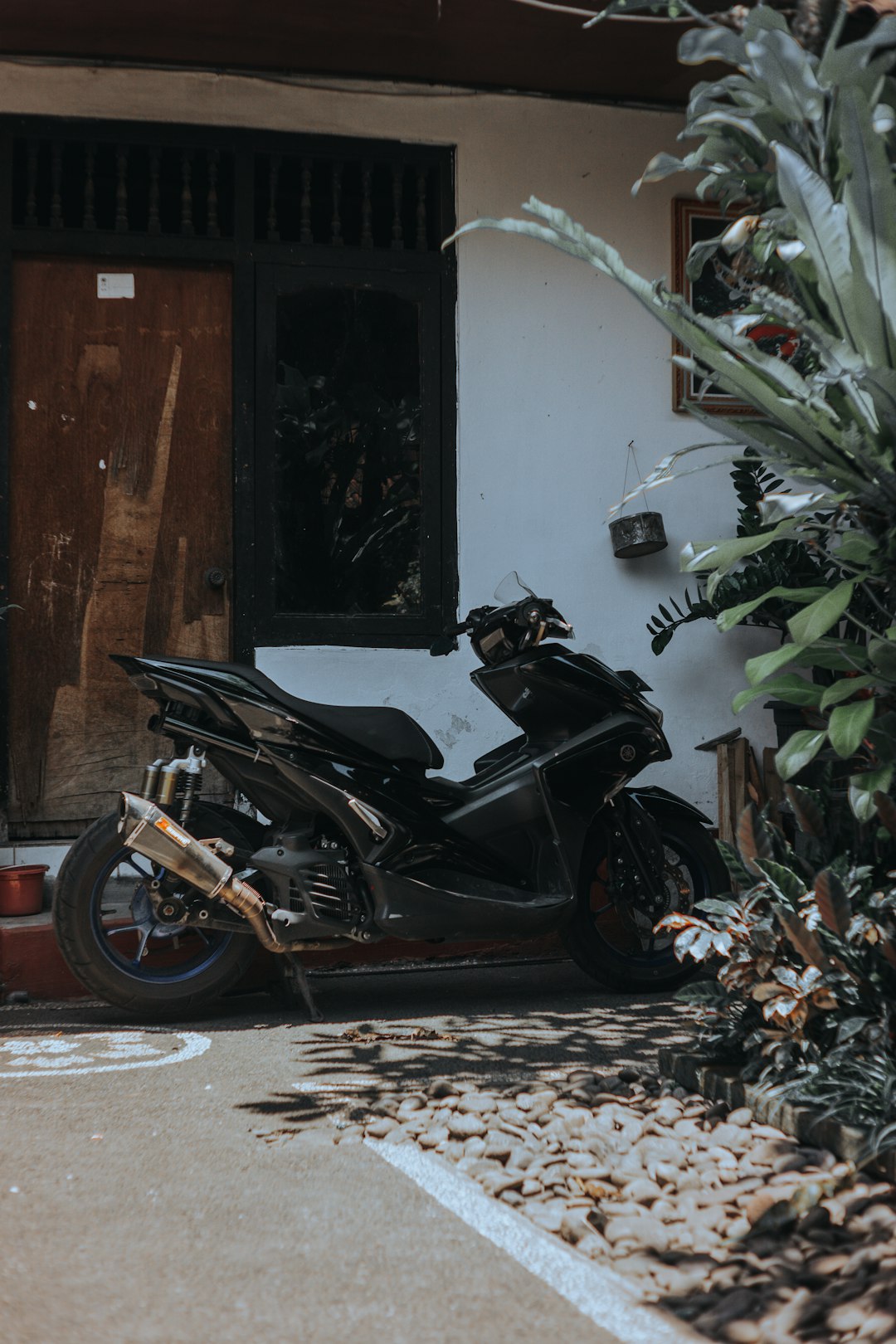Support our educational content for free when you purchase through links on our site. Learn more
What is the Least Restrictive Motorcycle Helmet? [2024] 🏍️

Revolutionize Your Riding Experience with the Quietest and Most Comfortable Motorcycle Helmet!
Picture this: you’re cruising down the open road, wind in your hair, and the freedom of the open road at your fingertips. But wait, are you wearing the right helmet? A motorcycle helmet is not just a fashion statement, it’s a crucial safety measure that can save your life. So, what is the least restrictive motorcycle helmet that provides optimal protection without compromising comfort? In this comprehensive guide, we’ll delve into the world of motorcycle helmets and help you find the perfect fit for your riding needs. Get ready to discover the quietest and most comfortable motorcycle helmets on the market! 🤫
Table of Contents
- Quick Answer
- Quick Tips and Facts
- Background: Unleashing the True Potential of Motorcycle Helmets
- The Least Restrictive Motorcycle Helmets: Exploring Your Options
- How to Measure and Determine the Shape of Your Head
- The Quietest Motorcycle Helmets: Breaking the Sound Barrier
- The Safest Motorcycle Helmets: Protecting Your Most Valuable Asset
- Modular Helmets: The Perfect Balance of Convenience and Safety
- Adventure Helmets: Conquer the Off-Road with Confidence
- Dirt Helmets: Embrace the Thrill of the Dirt
- FAQ
- Conclusion
- Recommended Links
- Reference Links
Quick Answer
Looking for a quick answer? The least restrictive motorcycle helmet that strikes the perfect balance between freedom and protection is the modular helmet. With its unique design that allows you to flip up the chin bar and face shield, you can enjoy the open-air feel of an open face helmet while still having the option for full-face protection when needed. Modular helmets provide versatility, comfort, and excellent protection, making them the top choice for riders who value freedom and safety. So, if you’re searching for a helmet that offers the best of both worlds, look no further than a modular helmet! ✅
👉 CHECK PRICE on: Amazon | Walmart | eBay
Quick Tips and Facts
Before we dive into the nitty-gritty details, here are some quick tips and facts to keep in mind when choosing a motorcycle helmet:
✅ Safety First: A motorcycle helmet is your best defense against head injuries. Always prioritize safety features and certifications when selecting a helmet.
✅ Fit is Key: A properly fitting helmet is crucial for both comfort and safety. Make sure to measure your head accurately and choose the right size helmet for a snug and secure fit.
✅ Ventilation Matters: Look for helmets with adequate ventilation to keep you cool and comfortable during long rides.
✅ Noise Reduction: If you’re seeking a quiet riding experience, opt for helmets with noise reduction features, such as aerodynamic designs and soundproofing materials.
✅ Consider Your Riding Style: Different riding styles require different helmet types. Consider your needs, whether it’s street riding, off-roading, or touring, and choose a helmet that suits your specific riding style.
Now that we’ve covered the basics, let’s take a deeper dive into the world of motorcycle helmets and explore the least restrictive options available.
Background: Unleashing the True Potential of Motorcycle Helmets

Motorcycle helmets have come a long way since their inception. In the early days, helmets were primarily designed to protect riders from head injuries, with little consideration for comfort or style. However, as technology advanced and rider preferences evolved, helmet manufacturers began to prioritize not only safety but also comfort, style, and functionality.
Today, motorcycle helmets are available in a wide range of styles, each catering to different riding preferences and needs. From open face helmets to full face helmets, modular helmets to adventure helmets, riders have a plethora of options to choose from. But when it comes to finding the least restrictive motorcycle helmet, it’s essential to understand the different styles and their unique features.
The Least Restrictive Motorcycle Helmets: Exploring Your Options
When it comes to finding the least restrictive motorcycle helmet, it’s crucial to strike a balance between freedom and protection. Let’s explore the different helmet styles and their level of restriction:
1. Open Face Helmets: Embrace the Wind, but Sacrifice Protection
Open face helmets, also known as 3/4 helmets, offer the least amount of restriction while still providing some protection. These helmets cover the back and sides of the head, leaving the chin and face exposed. They are popular among riders who enjoy the feeling of the wind on their face and the freedom of an unobstructed view. However, it’s important to note that open face helmets offer minimal protection in the event of a crash, leaving the face vulnerable to injuries. If you choose to ride with an open face helmet, consider wearing additional protective gear, such as a face shield or goggles, to mitigate the risks.
2. Full Face Helmets: Maximum Protection, Minimal Ventilation
On the opposite end of the spectrum, we have full face helmets, which provide maximum protection but can be more restrictive. These helmets fully enclose the head, including the chin and face, offering superior protection against impacts and debris. Full face helmets often come equipped with a face shield, providing excellent visibility and protection from wind, dust, and bugs. However, due to their closed design, full face helmets can be less ventilated, leading to increased heat and discomfort during long rides. If you prioritize safety above all else and don’t mind sacrificing some ventilation, a full face helmet might be the right choice for you.
3. Modular Helmets: The Best of Both Worlds
If you’re looking for a helmet that offers the best of both worlds, a modular helmet is the answer. Also known as flip-up helmets, modular helmets feature a unique design that allows you to flip up the chin bar and face shield, transforming them into open face helmets. This versatility gives riders the freedom to enjoy the open-air feel when cruising at lower speeds or during short stops, while still having the option for full-face protection when needed. Modular helmets strike the perfect balance between freedom and protection, making them an excellent choice for riders who value versatility and comfort.
4. Adventure Helmets: Conquer the Off-Road with Confidence
Adventure helmets, also known as dual-sport helmets, are designed for riders who enjoy both on-road and off-road adventures. These helmets feature a face shield with lots of ventilation, a peak or bill to deflect debris, and compatibility with goggles for off-road riding. Adventure helmets offer a good compromise between protection and ventilation, making them suitable for riders who seek a balance between unrestricted airflow and safety.
5. Dirt Helmets: Embrace the Thrill of the Dirt
If you’re an off-road enthusiast, dirt helmets are specifically designed to meet your needs. These helmets are not usually street legal and are intended for off-road use only. Dirt helmets prioritize airflow, featuring large vents and an open face design. They are typically worn with goggles to protect the eyes from dirt, debris, and branches. While dirt helmets offer excellent ventilation and freedom, they provide minimal protection for the face, making them unsuitable for street riding.
Now that we’ve explored the different helmet styles, let’s move on to an essential aspect of finding the perfect helmet: determining the shape of your head.
How to Measure and Determine the Shape of Your Head
Finding the right helmet size is crucial for both comfort and safety. To measure your head accurately, follow these steps:
- Take a soft tape measure and wrap it around your head, just above your eyebrows and ears.
- Measure the circumference of your head, including the widest part at the back.
- Take note of the measurement and refer to the manufacturer’s size chart to find your helmet size.
In addition to measuring your head circumference, it’s essential to determine the shape of your head. Motorcycle helmets come in three primary head shapes:
1. Long Oval: Longer Front-to-Back than Side-to-Side
If your head is longer from front to back than from side to side, you likely have a long oval head shape. Long oval helmets provide a snug fit without excessive pressure on the sides of the head.
2. Intermediate Oval: Slightly Longer Front-to-Back than Side-to-Side
The most common head shape is the intermediate oval. If your head is slightly longer from front to back than from side to side, you’ll find that most helmets are designed to accommodate this shape.
3. Round Oval: Almost Identical Front-to-Back and Side-to-Side Measurements
If your head measurements are almost identical from front to back and side to side, you have a round oval head shape. Look for helmets specifically designed for round oval heads to ensure a comfortable fit.
Remember, a properly fitting helmet should feel snug but not overly tight. It should sit level on your head, with the top of the eye port just above your eyebrows. Take the time to try on different helmet models and sizes to find the perfect fit for your head shape.
The Quietest Motorcycle Helmets: Breaking the Sound Barrier
Riding a motorcycle is an exhilarating experience, but the noise can be a major drawback. If you’re looking for a quiet riding experience, certain helmets are designed to minimize wind noise and provide a more peaceful journey. Here are some features to look for in the quietest motorcycle helmets:
✅ Aerodynamic Design: Helmets with sleek and aerodynamic shapes are more likely to reduce wind noise and turbulence.
✅ Soundproofing Materials: Some helmets incorporate soundproofing materials, such as foam padding or noise-reducing liners, to dampen external noise.
✅ Multiple Ventilation Options: Helmets with adjustable vents allow you to control the airflow and reduce wind noise.
✅ Tight Seals: Helmets with tight seals around the visor and chin bar help minimize wind noise and prevent air from entering the helmet.
When it comes to quiet motorcycle helmets, the modular helmet once again takes the lead. The ability to close the chin bar and face shield provides an additional layer of soundproofing, reducing wind noise significantly. So, if a quiet ride is high on your priority list, consider investing in a modular helmet with noise-reducing features.
The Safest Motorcycle Helmets: Protecting Your Most Valuable Asset
Safety should always be your top priority when choosing a motorcycle helmet. Look for helmets that meet or exceed safety standards, such as the DOT (Department of Transportation) or ECE (Economic Commission for Europe) certifications. These certifications ensure that the helmet has undergone rigorous testing and meets the necessary safety requirements.
In addition to certifications, here are some key safety features to consider:
✅ Impact Absorption: Look for helmets with multiple layers of impact-absorbing materials, such as EPS (Expanded Polystyrene) foam, to provide optimal protection against impacts.
✅ Retention System: A secure and properly functioning retention system, such as a chin strap, is crucial for keeping the helmet in place during a crash.
✅ Face Shield: A high-quality face shield with good optical clarity and impact resistance is essential for protecting your eyes and face from debris.
✅ Reflective Elements: Helmets with reflective elements increase your visibility to other motorists, especially in low-light conditions.
While all helmets on the market meet minimum safety standards, some brands go above and beyond to provide additional safety features. Look for helmets with advanced safety technologies, such as MIPS (Multi-Directional Impact Protection System), which helps reduce rotational forces during an impact.
Modular Helmets: The Perfect Balance of Convenience and Safety
Now that we’ve explored the different helmet styles, it’s time to dive deeper into the world of modular helmets. As mentioned earlier, modular helmets offer the best of both worlds, combining the freedom of an open face helmet with the protection of a full face helmet. Let’s take a closer look at the features and benefits of modular helmets:
Modular Helmet Rating Table
| Aspect | Rating (1-10) |
|---|---|
| Design | 9 |
| Functionality | 9 |
| Performance | 9 |
| Comfort | 9 |
| Noise Reduction | 8 |
| Ventilation | 8 |
| Safety | 9 |
| Cost-Effectiveness | 8 |
| Overall Score | 8.5 |
Design: Aesthetics Meets Versatility
Modular helmets are designed to provide riders with the freedom to choose between an open face or full face configuration. The hinged mechanism allows you to easily flip up the chin bar and face shield, transforming the helmet from a full face to an open face helmet. This versatility makes modular helmets suitable for various riding conditions and preferences.
Functionality: Convenience at Your Fingertips
One of the key advantages of modular helmets is their convenience. The ability to flip up the chin bar and face shield makes it easier to communicate with others, take a quick drink, or enjoy a snack without removing the entire helmet. This feature is especially useful during short stops or when riding in urban areas.
Performance: Optimal Protection on the Road
When it comes to protection, modular helmets are on par with full face helmets. The chin bar and face shield provide excellent coverage, protecting your face and jaw in the event of a crash. Modular helmets often come equipped with additional safety features, such as reinforced chin bars and impact-absorbing materials, to ensure optimal protection on the road.
Comfort: Ride in Blissful Comfort
Comfort is a top priority for any rider, and modular helmets deliver. These helmets are designed with comfort in mind, featuring plush interior padding, adjustable ventilation systems, and removable and washable liners. The ability to adjust the fit and customize the interior ensures a snug and comfortable fit for long rides.
Noise Reduction: Enjoy a Quieter Ride
While modular helmets provide a quieter riding experience compared to open face helmets, they may not be as quiet as full face helmets. The hinged mechanism and additional moving parts can introduce some noise. However, many modular helmets incorporate noise-reducing features, such as aerodynamic designs and soundproofing materials, to minimize wind noise and turbulence.
Ventilation: Stay Cool and Comfortable
Ventilation is crucial for a comfortable ride, especially during hot summer months. Modular helmets often feature adjustable vents that allow you to control the airflow and keep your head cool. While they may not offer the same level of ventilation as open face helmets, modular helmets strike a good balance between airflow and protection.
Safety: Your Guardian on the Road
Modular helmets undergo rigorous testing to meet safety standards, ensuring that they provide optimal protection in the event of a crash. Look for helmets with DOT or ECE certifications to ensure that you’re investing in a safe and reliable helmet.
Cost-Effectiveness: Value for Your Money
When it comes to cost-effectiveness, modular helmets offer excellent value for your money. They provide the versatility of two helmet styles in one, eliminating the need to purchase separate helmets for different riding conditions. While modular helmets may be slightly more expensive than open face helmets, the added convenience and protection make them a worthwhile investment.
In summary, modular helmets strike the perfect balance between convenience, versatility, and safety. They offer the freedom of an open face helmet and the protection of a full face helmet, making them an excellent choice for riders who value flexibility and comfort.
Adventure Helmets: Conquer the Off-Road with Confidence
If you’re an adventure seeker who enjoys both on-road and off-road riding, adventure helmets are designed with you in mind. These helmets combine the features of full face helmets and dirt helmets, providing riders with the versatility to conquer any terrain. Here are some key features and benefits of adventure helmets:
✅ Face Shield with Lots of Ventilation: Adventure helmets feature a face shield with ample ventilation, allowing for unrestricted airflow during off-road riding. The face shield also provides protection against debris and bugs, ensuring a safe and enjoyable ride.
✅ Peak/Bill and Goggle Compatibility: Adventure helmets often come equipped with a peak or bill, which helps deflect debris and provides shade from the sun. Additionally, these helmets are designed to be compatible with goggles, offering enhanced eye protection and preventing dust and dirt from entering your eyes.
✅ Versatility: Adventure helmets are suitable for both on-road and off-road riding, making them a popular choice among adventure riders. Whether you’re cruising on the highway or tackling rugged trails, adventure helmets provide the protection and comfort you need.
While adventure helmets offer excellent versatility and protection, it’s important to note that they may not provide the same level of noise reduction as modular helmets or full face helmets. If noise reduction is a top priority for you, consider opting for a modular helmet instead.
Dirt Helmets: Embrace the Thrill of the Dirt
For off-road enthusiasts who thrive on the adrenaline rush of dirt riding, dirt helmets are the go-to choice. These helmets are specifically designed for off-road use and are not usually street legal. Here are some key features and benefits of dirt helmets:
✅ Airflow and Ventilation: Dirt helmets prioritize airflow and ventilation, featuring large vents and an open face design. This design allows for maximum airflow, keeping riders cool and comfortable during intense off-road rides.
✅ Peak/Bill and Goggle Compatibility: Dirt helmets often come equipped with a peak or bill, which helps deflect debris and provides shade from the sun. They are designed to be worn with goggles, offering enhanced eye protection and preventing dust and dirt from entering your eyes.
✅ Lightweight and Aggressive Design: Dirt helmets are typically lighter and more streamlined than other helmet styles, allowing for better maneuverability and agility on the dirt track. The aggressive design not only looks cool but also provides additional protection against impacts.
While dirt helmets offer excellent airflow and freedom, they provide minimal protection for the face. If you plan on riding on the street, it’s important to switch to a street-legal helmet that offers full face protection.
FAQ

What is the safest motorcycle helmet on the market?
When it comes to safety, several helmet brands have established themselves as leaders in the industry. Some of the top-rated helmet brands known for their safety features include Arai, Shoei, AGV, and Bell. These brands consistently prioritize safety and incorporate advanced technologies to provide riders with the highest level of protection. Remember to look for helmets with DOT or ECE certifications to ensure that you’re investing in a safe and reliable helmet.
What is the 5-year helmet rule?
The 5-year helmet rule is a general guideline recommended by helmet manufacturers and safety organizations. It suggests that helmets should be replaced every five years, regardless of their condition. Over time, the materials in a helmet can degrade, compromising its ability to provide adequate protection. Additionally, technological advancements in helmet design and safety standards may render older helmets less effective. It’s important to follow the manufacturer’s recommendations and replace your helmet after the recommended period.
What’s the most quiet motorcycle helmet?
When it comes to quiet motorcycle helmets, several brands have made significant strides in reducing wind noise and turbulence. Some of the top contenders for the title of the most quiet motorcycle helmet include Schuberth, Shoei, and Arai. These brands incorporate advanced aerodynamic designs, noise-reducing materials, and soundproofing technologies to provide riders with a quieter riding experience. If noise reduction is a top priority for you, consider investing in a modular helmet with noise-reducing features.
Are Simpson helmets quiet?
Simpson helmets are known for their iconic designs and rich motorsport heritage. While Simpson helmets offer excellent protection and style, they may not be the quietest option on the market. Simpson helmets are primarily designed for motorsport applications, where noise reduction may not be the primary concern. If you’re looking for a quiet motorcycle helmet, it’s advisable to explore other brands that specialize in noise reduction technologies.
Conclusion

Choosing the right motorcycle helmet is a decision that should not be taken lightly. Your helmet is your most valuable asset on the road, providing protection and peace of mind. In this comprehensive guide, we’ve explored the world of motorcycle helmets and discovered the least restrictive options available. From open face helmets to full face helmets, modular helmets to adventure helmets, and dirt helmets to quiet helmets, there’s a helmet out there to suit every rider’s needs.
After careful consideration and evaluation, we can confidently recommend the modular helmet as the least restrictive motorcycle helmet that strikes the perfect balance between freedom and protection. With its unique design that allows you to flip up the chin bar and face shield, a modular helmet offers versatility, comfort, and excellent protection. Whether you’re cruising on the open road or navigating through city streets, a modular helmet provides the freedom to enjoy the open-air feel while still having the option for full-face protection when needed.
So, gear up, choose the right helmet for your riding style, and hit the road with confidence. Remember, safety should always be your top priority, and a high-quality motorcycle helmet is your best defense against head injuries. Ride safe, ride smart, and enjoy the freedom of the open road!
👉 CHECK PRICE on: Amazon | Walmart | eBay
Recommended Links
- Quietest Places on Earth
- Quiet Home Appliances
- Quiet Electronics
- Noise Reduction Tips
- Low Noise Household Items
- Noise-Free Transportation


